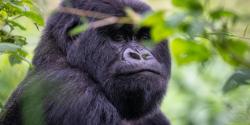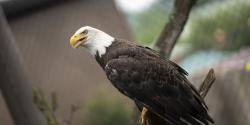Greater kudu are one of the largest antelope species.
The impressive spiral horns of male kudu can reach up to six feet in length from base to tip, with up to two and half twists.
Scientific Name: Tragelaphus strepsiceros
Conservation Status: Least Concern
Size: Height of 4 to 5 ft., without horns
Weight: Males can weigh up to 700 lbs.; females up to 300 lbs.
Median Life Expectancy: Males 6.8 years; Females 9.6 years










